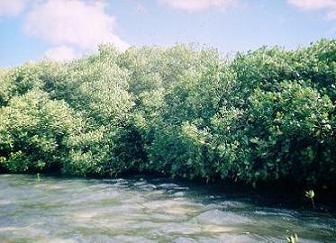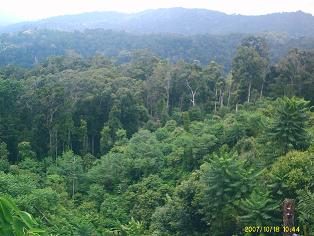| Java is the best-known island botanically in Indonesia (Ashton 1989). The total number of plant species, including weeds and cultivated species, mostly from the Americas, is over 6,500, of which 4,500 are native. Java has about half the known plant genera that are of Malesian origin. However, some of the Sundaic families of plants are surprisingly poorly represented, such as the Palmae, rattans, Calamus and Daemonorops and dipterocarps, for which there are just 10 species -- compared with 267 on Borneo and 105 on Sumatra. Sixteen genera of plants are endemic to Java, eight from mountains and six from deciduous forests. The mountain fauna of Java and Bali has the greatest affinities with Sumatra and is singularly different from Borneo. Despite the land connections with Borneo and Sumatra discussed earlier, Java has 111 genera, predominantly trees, and three families that might be considered Sundaic, which are absent from the others. Destruction of habitat, particularly lowland habitats, by both volcanoes and humans, may account for the impoverished flora on Java (Endert 1935).
|


|
Examples of the most spectacular plants on Java are first, the giant Rafflesia plant, of which there are two species in Java (Rafflesia rochussenii and R. patma). Rafflesia is remarkable in that it has no stem, no leaves and no proper roots. Secondly, Edelweiss (Anaphas javanica) is a famous plant found in Java and Bali. It grows in the mountains and can reach 8 m high and has a stem as thick as a person’s leg. And thirdly, the Lettuce Tree (Pisonia grandis), which is an attractive relative of Bougainvillea.
There is a floristic gradient from west to east in Java, probably because the species rich everwet forests are more abundant in West Java, less so in Central Java and less again in East Java. The north coasts are also different than the south coasts because they are drier and have fewer beaches and headlands; they were originally bordered by mangroves. Swamps were common behind mangroves but these have long been converted to rice fields and fish ponds. There are virtually no primary or old secondary forests now within 35 km of the north coast. Compared to the south coast, the north coast now has far fewer beach formation plants, but many more mangrove plant species (23 versus one species). The number of species throughout Java decline with altitude, with a number of plant zonal disjunctions at 1000 m, 1500 m, 2000 m, 2400 m to 2500 m and 3000 m (van Steenis and Schippers – Lammerste 1965). For example, 99% of the 217 orchid species have been recorded between 800-1,200 m, although not exclusively (Comber 1990).
The flora on the islands off West Java are generally not different from mainland Java. Although, the Karimunjawa Islands, Central Java have some species absent from the mainland, such as the rare tree Ouratea arcta, and the floral affinities of this island are closer with Bangka Island and Kalimantan than with Java. Nusa Kambangan, close to the south coast of Central Java, has a relictual plant assemblage, including rare and endemic species of plants such as the Giant Voodoo Lily (Amorphophallus decus-silvae). These have been protected by the fact that the island has prisons and is off limits to most people. However, in recently some 30,000 trees are estimated to have been felled on Nusa Kambangan; a continuation of this activity will see these relict forests degraded in just a few more years (Jakarta Post 2/7/2004). The remote island of Bawean, about half way between Java and Kalimantan, has a distinctly Javan flora, although again some species recorded there are not known from Java. The Kangean islands to the east, such as Madura and Bali, have a flora that differs little from that of East Java.
|
Many of the plants introduced in the Bogor Botanical Gardens, West Java, have become spectacular weeds throughout Indonesia. The most notable is the Water Hyacinth (Eichhornia crassipes), which now clogs waterways on most of the island, but others include Piper aduncum, Sagittaria platyphylla and Mikania micracantha (Whitten et al. 1996).
Next >>> |
Source : Report on Biodiversity and Tropical Forests in Indonesia, USAID/Indonesia, 2004. Prepared by : (1) Steve Rhee, M.E.Sc. (2) Darrell Kitchener, Ph.D. (3) Tim Brown, Ph.D. (4) Reed Merrill, M.Sc. (5) Russ Dilts, Ph.D. (6) Stacey Tighe, Ph.D. |
|





